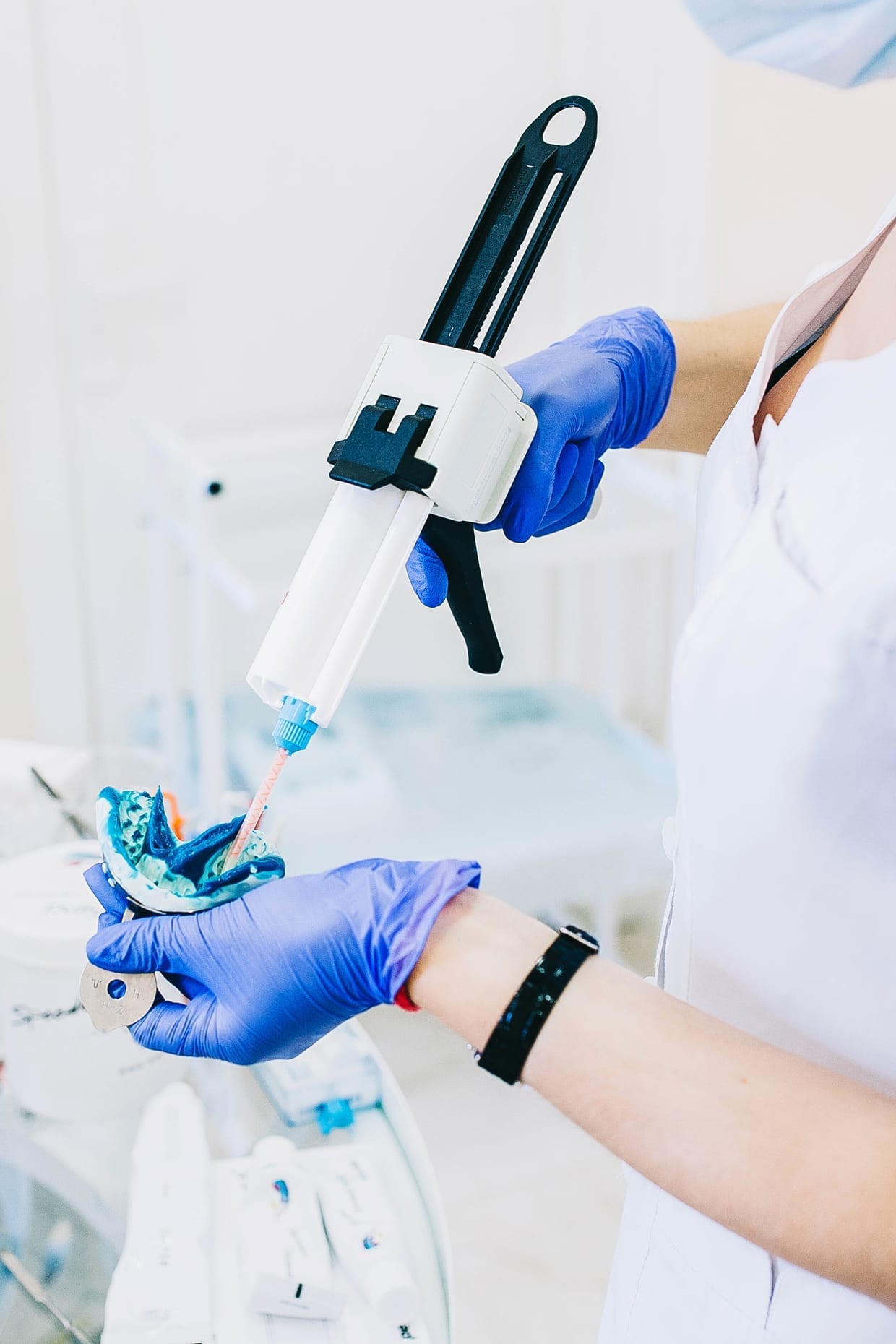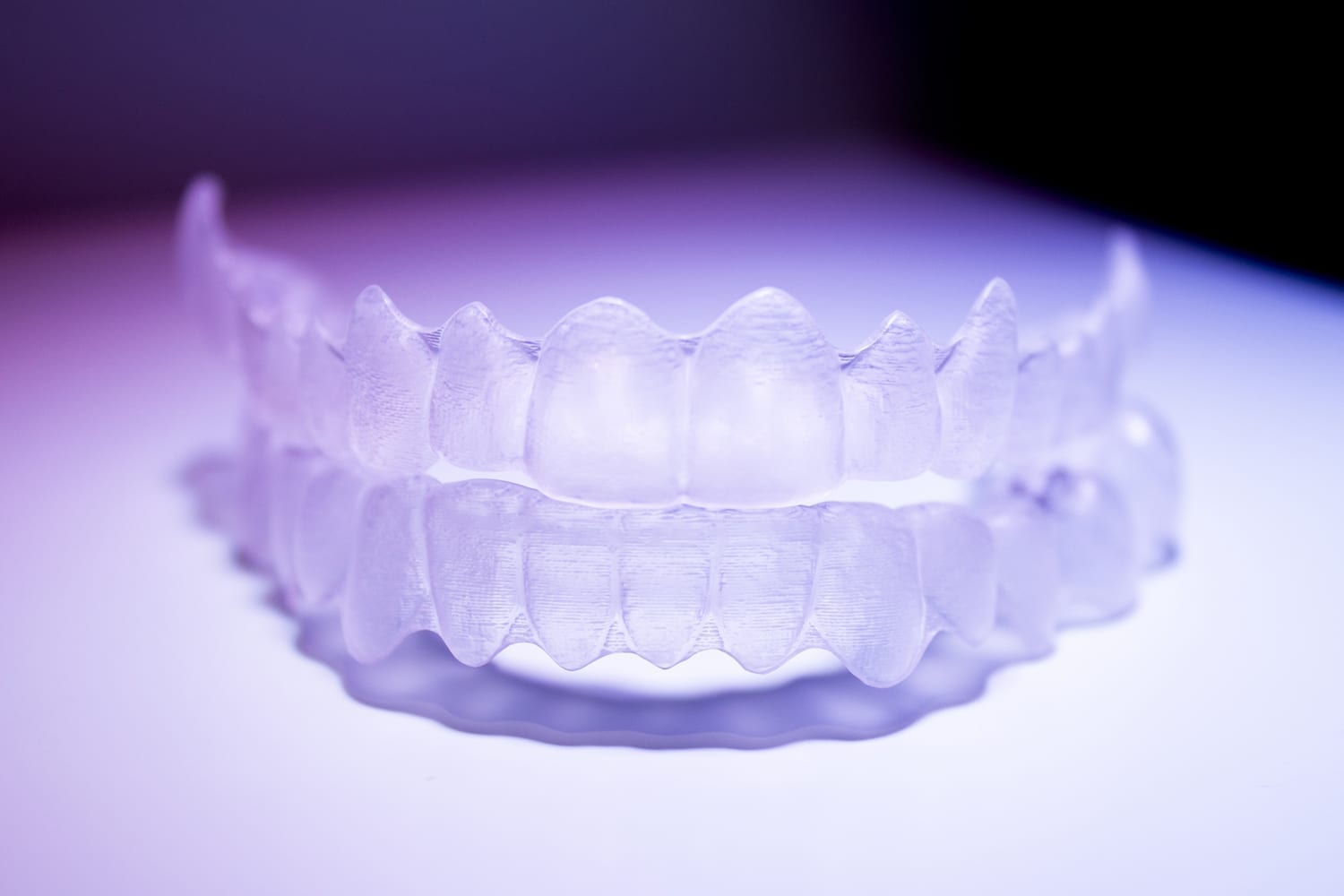Nowadays everything is on-demand. You can get your dinner delivered with the touch of a button, your dry cleaning can be waiting at home and you can book a masseuse to work on the kinks in your back right in your living room. And now, in 2019, you can even online order a perfect smile with mail-in teeth aligners as the leading treatment in the teeth-straightening biz.
According to the American Association of Orthodontics, an estimated 4.5 million Americans — most between the ages of 6-18 — wear braces. And with the global orthodontics market projected to increase to $2.6 billion by 2023 from $1.5 billion in 2016, this leaves an opening for at-home aligners, which let you skip visits to the orthodontist’s office and are taking over the market. You have likely heard of the key players: Candid Co., Smilelove, and perhaps the most aggressively marketed of the bunch, SmileDirectClub, which launched in 2014. Its business model resembles the hypothetical baby of Invisalign and Warby Parker. And with the emphasis on smiles today and obsession with happy pictures on Instagram, it makes sense that direct-to-consumer businesses are tackling the world of perfect teeth.
https://www.instagram.com/p/By6SQ-hDfZa/
But the allure of clear aligners actually started in 1997, when Align Technology introduced the first set of removable, invisible aligners — Invisalign — primarily marketed for adults who did not want to handle the stigma behind metal mouths and the discomfort that came along with them. They also came with a hefty price tag: The treatment today can cost anywhere between $3,500 and $8,000.
Last October, Invisalign lost its exclusivity on about 40 patents that kept it the leading clear-aligner brand, including some that protect the process that Align uses to plan and manufacture their aligners. This opened up the door for startups like SmileDirectClub to enter the market doing almost the same thing for a cheaper price. That, with the added help of more sophisticated 3-D printing technology, has made the allure of straight teeth brand new: You get to take charge of your smile, with no visits to the orthodontists’ office, for a fraction of the cost — 60 percent less than Invisalign.
It all seems too good to be true, but is it? Many doctors and orthodontists have gone on the record saying that straightening your teeth at home presents a problem, not a solution — particularly where complex procedures without in-person visits are pertained. “There’s so much that can go wrong that won’t be caught quick enough,” says Jeremy Crow, D.D.S. a cosmetic and restorative dentist in Pittsburgh, Pennsylvania.
But will most of the 300 million people worldwide who could benefit from straighter teeth turn to mail-in aligners, cutting out doctor expertise? When you eliminate the doctor from the treatment plan and process, you are also eliminating all the safeguards that guarantee you will be satisfied with the job — and left unharmed. So are at-home teeth aligning services as safe as they are purported to be?
How Do At-Home Aligners Work?
Take SmileDirectClub, for example. For a total of $1,895, you get sent a kit to make a mold of your teeth — or if you are lucky enough to live within driving distance of one of its few brick and mortar locations, you get your teeth scanned rather than molded. This mold is then turned into a 3-D model that is passed on to a duly licensed dentist or orthodontist. They review your case, create your retainer plan, and you receive a preview of your new post-aligner smile. The aligners are then 3-D printed and delivered to your door. The dentists or orthodontists you are assigned to checks in with you every 90 days through remote teledentistry via your customer account. And voilà, on an average of six months, you are showing off your new pearly whites.
Clear aligners are proven to provide positive results when used under medical supervision.
If you scroll through photos on social media, it truly seems like the at-home aligners work, and they have reported that they “transformed” 500,000 smiles to date, and still counting. Customers often leave reviews saying, “It’s been great and I highly recommend them!” Customers with tooth gaps have said, “I never thought my teeth would be this straight in 5 months, y’all changed my life.” Customers with crowding issues have said, “I couldn’t be happier with the results.” Meanwhile, there are others saying, “I have had several problems with my aligners and they will not send out new ones … I have never, not once even [sic] talk to with Dentist.” Another one wrote: “You are not being monitored by an orthodontist who spends years understanding what is required for ideal results. Your bite … will be ignored, which will be a problem for you eventually regardless of what you might think.”
And therein lies the crux of the whole thing: your bite. Metal braces have long been known to be a more effective treatment for complex cases that involve bite issues. Clear aligners, on the other hand, are also proven to provide positive results — when used under medical supervision. The American Association of Orthodontists even issued a consumer alert warning patients about these mail-in aligners saying, “In some instances, direct-to-consumer orthodontic companies do not involve in-person evaluations and/or supervision … by an orthodontist … There is more to creating a healthy, beautiful smile than moving the visible portions of your teeth … If not done correctly, [this] could lead to potentially irreversible and expensive damage such a tooth and gum loss, changed bites, and other issues.”
About two years ago, a SmileDirectClub patient made headlines when she lost the ability to chew properly due to the fact that her molars did not come together anymore. When evaluated by an orthodontist, he also found the treatment had moved her teeth out of the bone, making it likely that she would lose her lower front teeth. “We
You May Also Like
How is Invisalign Different?
The difference starts in the beginning. Creating a mold of your teeth alone is not an easy feat on its own accord, especially when it is a DIY endeavor at home. As someone who has had it done before — at a dental office — you can expect a lot of do-overs, ill-fitting impressions and a lot of gagging. If the impression is not just right, the aligners will not fit right, and your teeth will not move right (or left). It needs to fit perfectly and tightly on the teeth, which requires a perfect impression.
“We do a ton of Invisalign in our office, and even with that, patients sometimes come in and the aligners are not sitting right, even if they’re being professionally [supervised] by a dentist,” says Crow. “Sometimes for some reason, things just don’t track the way that they should. But since we’re seeing them every 3-4 weeks, it’s something we’re catching, rescanning and getting reset properly. Whereas if they’re not getting those stages, they’re just getting 20 trays, [going home] and that’s it and no one sees them again, things can go wrong in that amount of time.”

And once you have your trays — depending on the case — a dentist and orthodontist may have to take extra steps to make sure the teeth movements are precise. For a treatment such as Invisalign, extra steps are indeed usually taken, such as adding attachments — tooth-colored dots made of dental bonding that provide extra grip for the aligners — to some teeth to secure certain movements that must be precise. “[Tooth] rotations are very difficult to do without an attachment on a tooth,” says Crow.
And sometimes, if the teeth are really crowded, the only way to get those teeth where they need to be is to do a little interproximal reduction on each tooth — which involves a little sandpaper strip that goes between each tooth and takes at most half a millimeter of the tooth away. It’s minimal, but over 20 teeth, it can add a lot of space. “If you didn’t do that, the only way to put the teeth in line without making space is to tilt the teeth out farther, which is where you run into issues where you’re pushing them farther and they’re moving out of the bone,” adds Crow.
What Cases Are Good Candidates For At-Home Aligners?
Minor, simple cases. “If they have a tooth that’s a little twisted, that might be fine,” says Crow. “But if there’s a lot of crowding, the teeth have to go somewhere.” Keep in mind that most mail-in aligners only send out about 20 trays. SmileDirectClub says your treatment will last six months, on average, but most orthodontists say that more complex cases typically require 40-80 trays.
But if your mantra aligns closely with, “this is better than nothing” and you are looking for the lowest price possible, mail-in aligners might be right down your alley. Just remember the changes might be minimal and potentially short-lived.
What’s the Bottom Line?
The allure of paying about 60 percent off the sticker price of in-office aligners — Invisalign— is strong. But ultimately, you will have to consider whether $1,400-$1,800 is still too much money to shell out for a potentially imperfect job. Orthodontics is not traditionally covered by insurance, but today, most insurance companies reimburse up to $1,000 of the treatment cost, directly to you. With Invisalign, your dentist or orthodontist submits a claim for you, but most at-home aligner companies do not accept payments directly from insurance companies, so make sure to inquire.
And not to mention that dentists like Crow are seeing patients who have to restart the process after attempting mail-in aligning treatments. Is it really a deal if you are paying for it twice?
Most orthodontists offer free consultations, so if you are considering straightening your teeth, book an appointment so you may have all your options presented to you. It is true most orthodontists out there do not consider themselves fans of mail-in aligners, but they will be able to diagnose what the main problem with your smile is — if any — and help you make an educated choice.
We only recommend products we have independently researched, tested, and loved. If you purchase a product found through our links, Sunday Edit may earn an affiliate commission.









